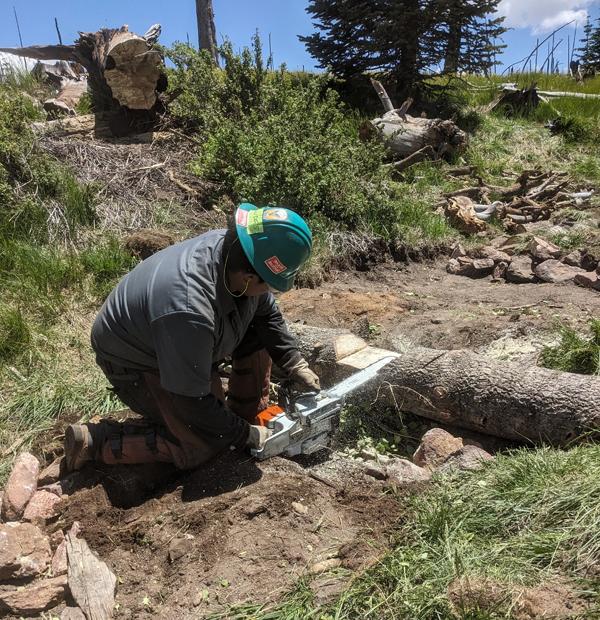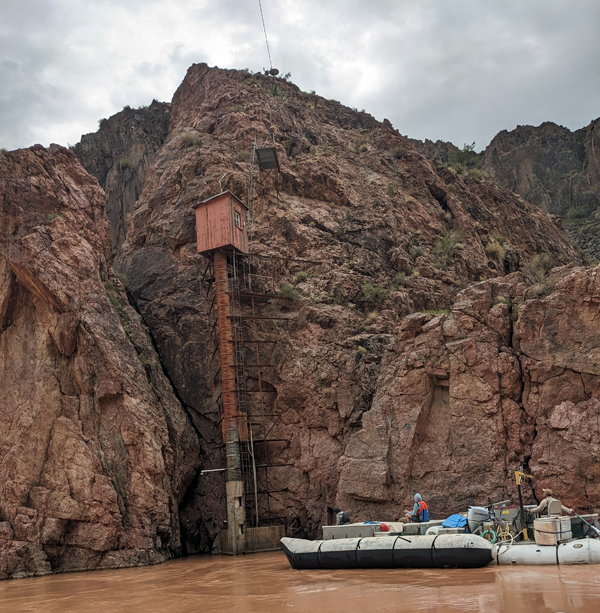—Micah Fennessy-Butters
I was nominated as this year’s Charles C. Avery intern scholar. This scholarship provides a student with the opportunity to be hosted under professional hydrology-related organizations to gain practical working experience and mentorship. As this year’s Avery intern scholar, I worked with many organizations and gained experience that has shaped how I will approach my career moving out of the completion of my bachelor’s degree in geology.
This summer, I worked with the USGS’ Grand Canyon Monitoring and Research Center (GCMRC), the Museum of Northern Arizona (MNA), and Natural Channel Design (NCD). The work I completed with these organizations was exceptionally diverse and allowed me to explore a vast spectrum of what a career in hydrology could entail. Not only did this opportunity provide me with tangible work experience, but it also allowed me to talk to professionals within industry about their experiences and pathways that led them to the current point in their career.
I began my intern scholarship program with NCD, a leading natural resource planning and civil engineering consulting firm. The work I completed with them included Excel work for, and monitoring of, their local projects, which then transitioned into a weeks’ worth of field work in the Pinaleño mountain range in southeastern Arizona. This involved working with NCD’s engineers, crews from the Ancestral Lands Conservation Corps, and the Forest Service to restore an eroded spring degraded by wildfire near the summit of Mount Graham. This restoration work entailed the sloping of banks where the spring channel had deeply incised and installing structures created from rocks, sticks, and logs within the channel, designed to maintain and increase channel stability, provide habitat for local wildlife, and preserve the natural ecosystem. My time spent with NCD taught me the many ways water resources can be protected and gave me an invaluable experience working with a diverse group of people from a wide spectrum of backgrounds.
Following my work with NCD, I was given the opportunity to work with the USGS’s GCMRC. This included one LIDAR survey looking at the geomorphology of rills feeding into the Colorado River and looking at the local stratigraphy revealed by incised stream banks, with the goal of understanding the provenance of varying sediment packages along Pariah Beach, near Lee’s Ferry. Following this, I was invited to work with GCMRC and the Arizona Water Science Center on their fall sediment trip, a 2-week motorized rafting trip through the Grand Canyon. This trip included taking suspended sediment samples from the Colorado River, collecting sediment samples from automatic samplers, taking volumetric flow measurements through the river corridor, downloading data from long-term data loggers, and servicing equipment throughout the Grand Canyon. This work allowed me to get hands-on, practical experience with both equipment and data collection methods used by professionals that will be valuable for me going forward with my career within hydrology. My time with USGS personnel also helped me set my sights into what I would like to do with my degree after my graduation in December of 2023.
The last organization I worked with was MNA. This work included surveying the biology of MNA’s living roof, along with identifying candidates to plant on top of the museum’s living roof. It also included planting native species within their night pollinator garden and the Jaime Major Golightly gardens, pulling invasive species within the museum’s premises, and collecting seeds from their community garden. Along with this, I worked with MNA to survey an understudied local spring, mapping the extent and degree of the spring’s influence on local ecology, along with precisely mapping channel features. My time with MNA allowed me to further develop my plant identification skills and, in the case of working on their living roof, to practically use my understanding of local life zones native to the San Fransisco Volcanic Field. This part of my intern scholarship also allowed me to explore the possibilities of my mapping / GIS experience within a professional setting outside of my degree path.
Although my time working as an intern scholar through AHS has been extremely informative and invaluable to the development of my career, I think it could be improved in a few ways. This intern scholarship only allocates 200 hours of work with a handful of different organizations. I think it would benefit students much more with twice as many hours so they can fully grapple with a project. I found that I did not get to see many of the ways the data I collected were used, and it would have been valuable to get experience synthesizing this data.
I would like to thank the AHS for this opportunity. To say this intern scholarship has jumpstarted my career would be an understatement. The methods I learned, the instruments I got the pleasure of working with, the experiences I gained, and not to mention the people I have met and networked with, have guided and given me direction on to how I intend to use my degree. I never realized how close-knit the hydrology community was in Flagstaff and I feel very privileged to have had a foot in the door in it for just a brief time.
A note from the AHS corporate board: Thanks for your thoughtful feedback, Micah. AHS and the AHS Foundation hear and understand your concerns and we are taking concrete steps to address these issues.


